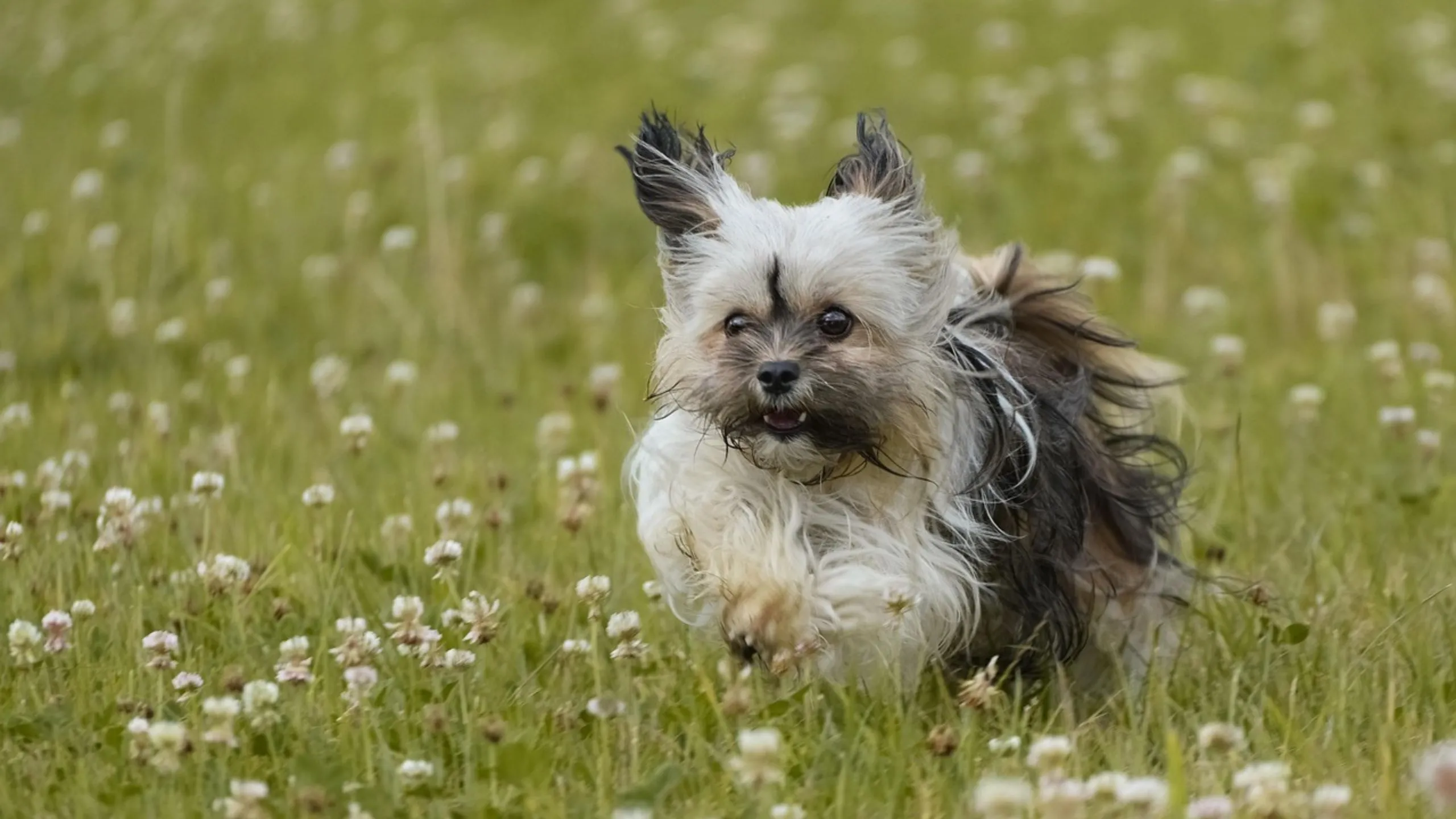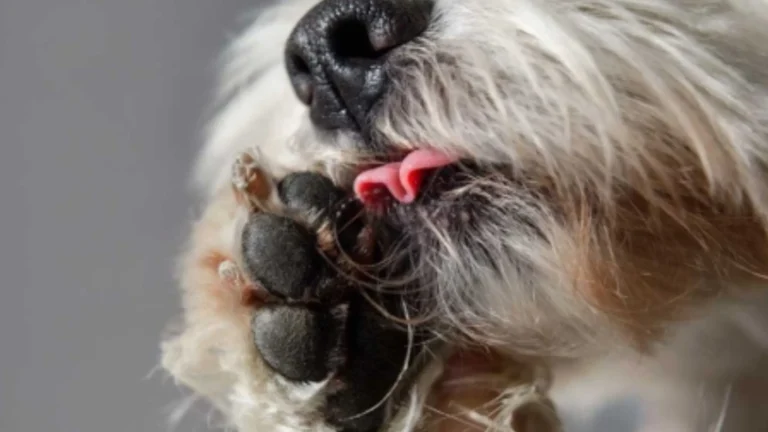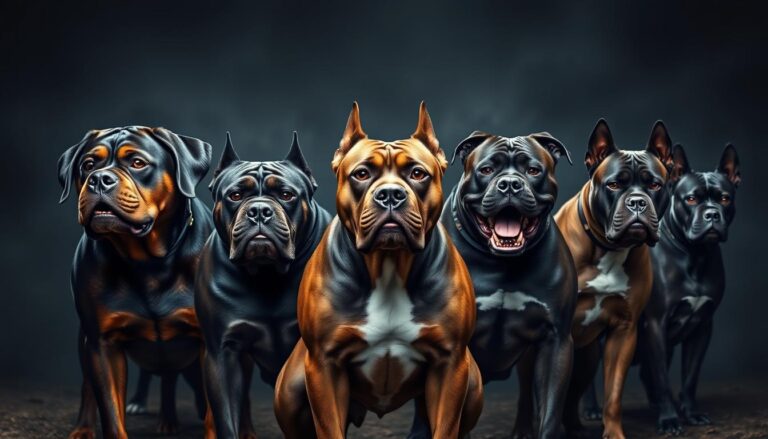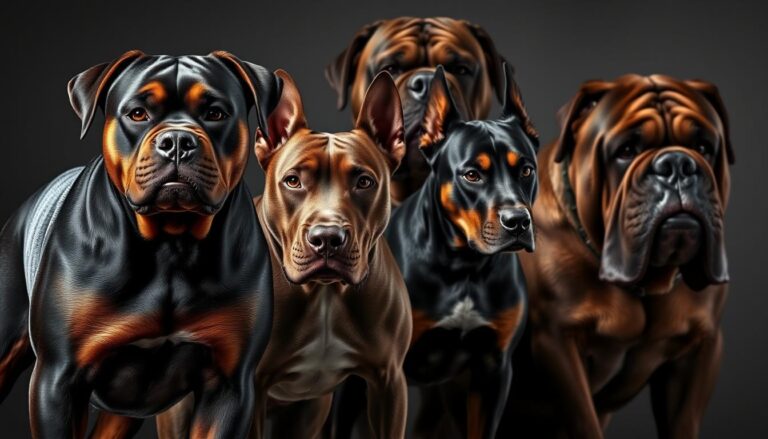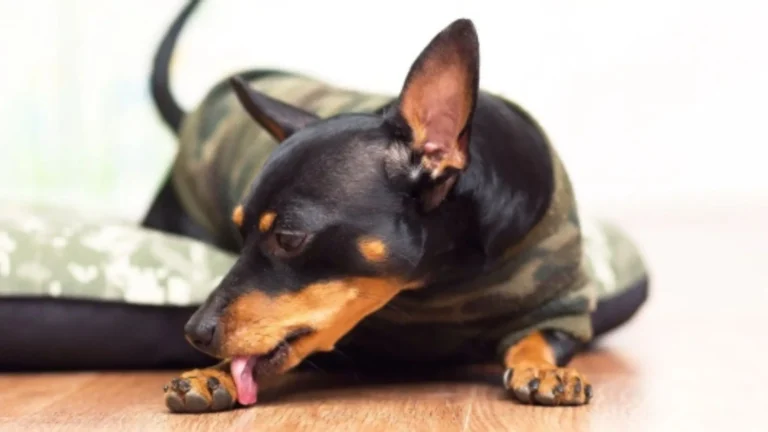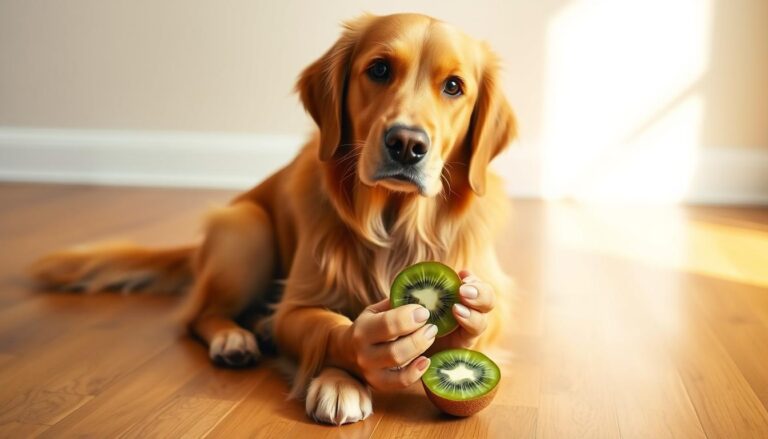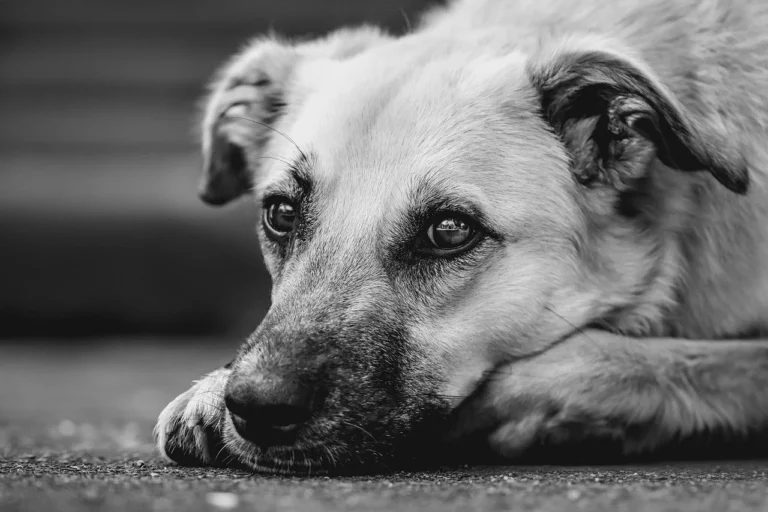Huge Fluffy Dog Breeds That Make Great Companions
Table of Contents
Growing up, I never got why huge fluffy dogs were so special until I met Max. He was my neighbor’s Saint Bernard. His big size and kind eyes showed me that being big is about love, not scaring people.
Getting a big, hairy dog is more than just getting a pet. It’s like gaining a loyal friend who will change your life. They bring warmth, protection, and endless love. These dogs are not just pets; they are family with hearts as big as they are.
Huge fluffy dogs add something special to our lives. They comfort us when we’re down, protect us when needed, and give endless cuddles. They make any place feel like home, whether you have a big house or a small apartment. These amazing dogs can fit into any life and become your best friend.
In this guide, we’ll dive into the world of massive, soft dogs that will capture your heart. Get ready to fall in love with these incredible gentle giants.
Understanding the Appeal of Large Fluffy Dogs
Exploring the world of massive shaggy pooch breeds reveals a universe of canine companionship. These big woolly mutts win hearts with their impressive size and unique qualities. They become special members of any family.
Large fluffy dogs are more than just pets. They bring warmth, protection, and deep emotional connections. They transform your home and improve your well-being.
Physical Characteristics of Giant Breeds
The physical beauty of these dogs is clear. They have:
- Impressive body size that commands attention
- Thick, luxurious coats providing visual and tactile appeal
- Muscular builds that showcase strength and elegance
- Soft, plush fur that invites gentle touch
Mental and Emotional Benefits of Large Dogs
Owning a big woolly mutt brings deep psychological benefits. Studies show that large dogs can:
- Reduce stress and anxiety
- Provide unconditional emotional support
- Increase opportunities for social interaction
- Enhance overall mental health
Space and Living Requirements
Before getting a massive shaggy pooch, think about space needs. These big dogs require:
- Ample room for movement
- Comfortable resting areas
- Regular exercise opportunities
- Dedicated grooming spaces
“A large dog is not just a pet, but a loyal friend who transforms your living space into a sanctuary of love and companionship.”
The Gentle Giants: Most Popular Huge Fluffy Dog Breeds
If you dream of a big, fluffy dog to fill your home with love, you’re in the right spot. These large dogs are more than just cute pets. They are loyal friends with big hearts and coats.
There are many breeds of big, fluffy dogs, each with its own charm. Let’s look at some of the most loved giant dogs that can change your home and heart.
- Newfoundland: Known for incredible water rescue skills
- Saint Bernard: Legendary mountain rescue breed
- Great Pyrenees: Majestic mountain guardians
- Bernese Mountain Dog: Swiss working breed with stunning coat
Each breed has something unique to offer your family. Their big size and fluffy coats make them stand out. Their gentle nature makes them perfect friends.
| Breed | Average Weight | Coat Type | Temperament |
|---|---|---|---|
| Newfoundland | 100-150 lbs | Dense, water-resistant | Gentle, patient |
| Saint Bernard | 120-180 lbs | Thick, long | Calm, protective |
| Great Pyrenees | 85-115 lbs | Thick, weather-resistant | Loyal, independent |
| Bernese Mountain Dog | 70-115 lbs | Long, silky | Friendly, good-natured |
When picking a big fluffy dog, think about your home, lifestyle, and grooming needs. These amazing dogs need commitment but give back with endless love and loyalty.
Newfoundlands: The Swimming Bears
Explore the world of the Newfoundland, a huge soft-coated friend with amazing swimming skills and a kind heart. These big fluffy friends are more than just big dogs. They are true water rescue heroes and loving family pets.
Temperament and Family Compatibility
Newfoundlands are amazing family dogs. They are patient and sweet, making them great playmates for kids. These gentle giants are very smart and can sense when family members need help or comfort.
- Extremely tolerant with children
- Natural protective instincts
- Calm and predictable temperament
Exercise and Training Needs
Your big fluffy friend needs regular exercise, especially in water. Newfoundlands are great at swimming and water rescue. Their strong muscles let them do amazing things in the water.
- Daily walks of 30-60 minutes
- Swimming sessions recommended
- Moderate-intensity training
Grooming Requirements
Keeping your big soft-coated friend’s coat looking good takes a lot of work. Their thick, water-resistant fur needs brushing to avoid mats and manage shedding. Getting a professional groom every 6-8 weeks keeps their coat healthy and easy to manage.
“A well-groomed Newfoundland is a happy Newfoundland” – Professional Dog Trainers Association
These incredible dogs are a perfect mix of strength, gentleness, and loyalty. They make an amazing addition to any loving home.
Saint Bernards: Historical Rescuers Turned Family Pets
When you think of a huge fluffy dog with an incredible history, the Saint Bernard comes to mind. These dogs originated in the Swiss Alps. They were famous for rescuing travelers from dangerous mountains.
They were perfect for the job because of their size and thick coat. This helped them survive the harsh alpine conditions.
Saint Bernards have changed from heroic rescuers to loving family pets. They are gentle and patient, making them great with kids. Despite their size, they are soft and loving.
- Average weight: 120-180 pounds
- Typical height: 26-30 inches at the shoulder
- Lifespan: 8-10 years
- Coat types: Short and long-haired varieties
Caring for a Saint Bernard is a big responsibility. They need regular grooming and like cooler climates. Make sure they have enough space and exercise to stay healthy and happy.
| Characteristic | Details |
|---|---|
| Temperament | Gentle, Patient, Calm |
| Exercise Needs | Moderate (30-60 minutes daily) |
| Grooming Difficulty | High (frequent brushing required) |
If you’re thinking of getting a huge fluffy dog, the Saint Bernard is a great choice. They offer a mix of history and modern companionship. Their loving nature and impressive size make them truly special.
Great Pyrenees: Majestic Mountain Guardians
If you’re looking for a giant furry pet, the Great Pyrenees is a top choice. This massive shaggy pooch comes from the Pyrenees Mountains. They are known for guarding livestock from predators.
These dogs are a mix of strength and gentleness. Their thick coat keeps them warm in cold climates. This makes them great companions for many places.
Protective Nature and Loyalty
Great Pyrenees dogs are famous for their loyalty and protective instincts. They are great at:
- Watching over family members
- Providing a sense of security
- Remaining calm in challenging situations
Climate Adaptability and Care
Their white coat is not just for looks. It keeps them warm in snow and cool in other places. Regular grooming keeps their fur looking good and prevents tangles.
Social Behavior Patterns
Despite their size, Great Pyrenees are gentle with kids. They are patient with family and understand social cues well.
“A Great Pyrenees is not just a pet, but a loyal guardian of the family.” – Canine Breed Experts
Remember, their protective nature needs training and socialization. This ensures they fit well into your family.
Bernese Mountain Dogs: The Swiss Beauties
Looking for a big woolly mutt with a great personality? The Bernese Mountain Dog might be perfect for you. These dogs come from the Swiss Alps. They’ve worked with farmers and herders for years.
They have a stunning tri-colored coat. Bernese Mountain Dogs are not just beautiful. They are strong, smart, and gentle, making them great family pets. Their thick fur keeps them warm and looks super cuddly.
- Average weight: 70-115 pounds
- Lifespan: 7-10 years
- Origin: Bern, Switzerland
- Coat: Thick, long, tri-colored
These dogs do well in many places, from big farms to homes in the suburbs. They need lots of exercise and to be around people. They’ll love going for walks, playing, and being part of the family.
| Characteristic | Details |
|---|---|
| Temperament | Gentle, Loyal, Intelligent |
| Exercise Needs | Moderate to High |
| Grooming Difficulty | High (Regular brushing required) |
Getting a Bernese Mountain Dog means you’ll get a loyal friend. They are big but have hearts of gold. They will love your family with all their might.
Health Considerations for Huge Fluffy Dog Breeds
Owning a big, fluffy dog comes with special health challenges. Every pet owner needs to know about these. Big, fluffy dogs need special care to stay healthy and avoid health problems.
Common Medical Issues
Big, fluffy dogs face certain health issues that need attention. Some common problems include:
- Hip dysplasia
- Bloat (gastric dilatation-volvulus)
- Joint problems
- Skin conditions related to thick coats
Preventive Care Measures
Good healthcare can greatly improve your dog’s life. Regular vet visits are key for catching health issues early.
| Preventive Care Strategy | Recommended Frequency |
|---|---|
| Annual comprehensive health screening | Once per year |
| Weight management assessment | Every 6 months |
| Dental health check | Twice per year |
Dietary Requirements
What your dog eats is very important for their health. High-quality, breed-specific diets help prevent obesity and support joints.
- Choose protein-rich foods
- Control portion sizes
- Supplement with joint-supporting nutrients
- Avoid overfeeding
“Prevention is always better than cure when it comes to your furry friend’s health.” – Veterinary Nutrition Expert
Essential Grooming Tips for Large Furry Companions
Keeping your colossal soft-coated buddy’s coat in top shape takes effort and the right strategy. Your giant fluffy friend needs regular grooming to stay healthy and happy. Professional groomers suggest starting a grooming routine early to make it easier for both of you.
Choose the right tools to keep your big furry friend looking great. Here are the grooming supplies every large dog owner needs:
- Slicker brush with wide-spaced bristles
- Undercoat rake for double-coated breeds
- Long-toothed metal comb
- Professional-grade deshedding tool
- Dog-specific shampoo and conditioner
How often you brush your dog depends on their coat type. Short-haired giants may need weekly brushing, while long-coated breeds need daily brushing to avoid mats. Focus on areas that easily tangle, like behind the ears, under the legs, and around the tail.
Don’t bathe your colossal soft-coated buddy too often. Most large fluffy breeds only need a bath every 6-8 weeks unless they get very dirty. Use lukewarm water and make sure to rinse well to avoid skin problems.
Professional grooming is a good choice for your monumental fluffy pal. Expert groomers know how to care for large breeds, offering deep cleaning and coat maintenance that’s hard to do at home.
“A well-groomed dog is a happy and healthy dog.” – Professional Dog Grooming Association
Grooming is more than just making your dog look good. It’s a chance to check for skin issues, lumps, or any physical changes. Regular grooming sessions strengthen your bond with your furry friend and keep them healthy.
Exercise and Training Requirements
Caring for a large hairy canine needs a full plan for exercise and training. Your huge fluffy dog needs more than just physical activity. They need a complete approach that covers both body and mind.
Daily Activity Needs
Large breed dogs need special exercise routines. For your huge fluffy dog, here are some daily activity tips:
- 60-90 minutes of moderate exercise daily
- Mix of walking, playing, and structured activities
- Low-impact exercises to protect joint health
Training Strategies
Effective training for a large hairy canine uses positive reinforcement and consistent methods. Patience and understanding are essential when working with these gentle giants.
- Start training early
- Use reward-based methods
- Keep training sessions short and engaging
- Prioritize socialization
Mental Stimulation Importance
Keeping your huge fluffy dog’s mind active is as important as physical exercise. Use interactive toys, puzzle feeders, and varied activities to prevent boredom and support cognitive development.
A mentally stimulated dog is a happy and well-adjusted companion.
When picking training accessories, choose a well-fitted harness. It should enhance comfort and style, supporting your dog’s physical and emotional well-being.
Living with a Giant Breed: Practical Considerations
Getting a giant furry pet means you need to plan ahead. These big dogs are more than pets; they’re family members. They need special care and resources.
Before you get a huge dog, think about these important changes:
- Space requirements: Your home must fit a large breed’s needs
- Financial investment for food, medical care, and grooming
- Dedicated time for exercise and training
- Adaptable living environment
“Dogs can offer unique companionship and provide an emotional connection strong enough to combat feelings of loneliness,” says Tarik Jayousi, founder of A&T Trained Dogs.
Your home will change with a big dog. Get ready for lots of shedding, possible damage, and more cleaning. Buy strong furniture, washable covers, and good cleaning tools to handle fur and drool.
Being financially ready is key. Big dogs eat more, need bigger beds, and cost more at the vet. Plan your budget to give your dog the best care for their whole life.
Despite the challenges, the love and friendship of a giant pet are worth it. Enjoy the adventure of living with a gentle giant.
Creating the Perfect Environment for Your Huge Fluffy Dog
Bringing a big woolly mutt home needs careful planning. They need more than a place to sleep. They need a space that supports their health and happiness.
First, pick out special areas for your large dog. These should be big and comfy. Think about these important things:
- Create a spacious resting area with a large, supportive bed
- Ensure easy access to water and food stations
- Provide enough room for stretching and moving around
- Install non-slip flooring to prevent joint stress
Keeping the right temperature is key for your dog. Big dogs can get too hot. So, make sure you have:
- Good air circulation
- Cool areas during summer months
- Warm spaces during colder seasons
The social side is just as important as the physical space. Dogs are pack animals who love to be around people. Make sure your dog is part of the family, plays with you, and feels loved.
“A dog is not just a pet, but a companion who fills our lives with unconditional love and joy.”
Don’t forget about your dog’s mind. They need fun and challenges as much as comfort. Change toys, use puzzle feeders, and play with them. This will make your home a happy place for them.
Conclusion
Getting a sizable shaggy hound is more than just getting a pet. These amazing dogs bring warmth, love, and joy to your home. They need dedication, understanding, and a real commitment to their special needs.
Each fluffy breed has its own special traits that make them great friends. Newfoundlands are great swimmers, and Great Pyrenees are natural mountain guardians. Choosing the right breed means thinking about your lifestyle and how much space you have.
It’s important to groom, exercise, and take care of your large fluffy dog’s health. Good food, vet visits, and training make them happy and well-adjusted. They love attention, structure, and real affection.
Bringing a huge fluffy dog into your life is an amazing adventure. By knowing their needs and respecting their special traits, you’ll create a strong bond. This bond will make your lives richer in many ways.
FAQ
How much space do I need to own a huge fluffy dog?
Are huge fluffy dogs good with children?
How much grooming do these dogs require?
What are the typical food costs for a giant breed?
Do these dogs have specific health concerns?
How much exercise do huge fluffy dogs need?
Are these dogs suitable for first-time dog owners?
What is the average lifespan of huge fluffy dog breeds?
How do these dogs handle different climates?
What are the typical adoption or purchase costs for these breeds?
How much space do I need to own a huge fluffy dog?
Are huge fluffy dogs good with children?
How much grooming do these dogs require?
What are the typical food costs for a giant breed?
Do these dogs have specific health concerns?
How much exercise do huge fluffy dogs need?
Are these dogs suitable for first-time dog owners?
What is the average lifespan of huge fluffy dog breeds?
How do these dogs handle different climates?
What are the typical adoption or purchase costs for these breeds?
FAQ
How much space do I need to own a huge fluffy dog?
You’ll need a big home with a large yard or easy outdoor access. Most giant breeds need lots of space to move around. They need at least 500-1000 square feet of living space and outdoor areas for exercise. Apartments are not good for these big dogs.
Are huge fluffy dogs good with children?
Yes, many large fluffy breeds like Newfoundlands, Bernese Mountain Dogs, and Great Pyrenees are very gentle with kids. They are calm and protective, making them great family pets. But, it’s important to watch them with small kids to avoid accidents.
How much grooming do these dogs require?
Huge fluffy dogs need a lot of grooming. They need daily brushing and professional grooming every 6-8 weeks. Their thick coats shed a lot, especially in seasonal changes. You’ll need special tools and sometimes professional equipment to keep their coat healthy.
What are the typical food costs for a giant breed?
Large fluffy dogs eat 4-6 cups of high-quality dog food every day. This costs about 0-0 a month. They need special large-breed formulas, which are more expensive than regular dog food.
Do these dogs have specific health concerns?
Yes, giant breeds often get hip dysplasia, bloat, heart problems, and joint issues. Regular vet visits, keeping them at a healthy weight, and exercise are key. Pet insurance is a good idea because of the high costs of their health care.
How much exercise do huge fluffy dogs need?
Most need 60-90 minutes of exercise daily, like walks and playtime. Swimming is good for breeds like Newfoundlands. The exact amount depends on the breed, age, and health, so check with a vet.
Are these dogs suitable for first-time dog owners?
While many are gentle, they need experienced owners because of their size and care needs. First-timers should be ready for a lot of time in training, grooming, and exercise. Getting professional training and doing thorough research is advised.
What is the average lifespan of huge fluffy dog breeds?
Most giant breeds live 8-12 years. Their lifespan depends on genetics, diet, exercise, and health care. Some breeds, like Bernese Mountain Dogs, have shorter lives, while others, like Great Pyrenees, might live a bit longer.
How do these dogs handle different climates?
Their thick coats keep them warm in cold climates. But, they can get too hot in extreme weather. They need cool, shaded areas, lots of water, and should avoid hard exercise when it’s hot.
What are the typical adoption or purchase costs for these breeds?
Purebred huge fluffy dogs cost
FAQ
How much space do I need to own a huge fluffy dog?
You’ll need a big home with a large yard or easy outdoor access. Most giant breeds need lots of space to move around. They need at least 500-1000 square feet of living space and outdoor areas for exercise. Apartments are not good for these big dogs.
Are huge fluffy dogs good with children?
Yes, many large fluffy breeds like Newfoundlands, Bernese Mountain Dogs, and Great Pyrenees are very gentle with kids. They are calm and protective, making them great family pets. But, it’s important to watch them with small kids to avoid accidents.
How much grooming do these dogs require?
Huge fluffy dogs need a lot of grooming. They need daily brushing and professional grooming every 6-8 weeks. Their thick coats shed a lot, especially in seasonal changes. You’ll need special tools and sometimes professional equipment to keep their coat healthy.
What are the typical food costs for a giant breed?
Large fluffy dogs eat 4-6 cups of high-quality dog food every day. This costs about $100-$250 a month. They need special large-breed formulas, which are more expensive than regular dog food.
Do these dogs have specific health concerns?
Yes, giant breeds often get hip dysplasia, bloat, heart problems, and joint issues. Regular vet visits, keeping them at a healthy weight, and exercise are key. Pet insurance is a good idea because of the high costs of their health care.
How much exercise do huge fluffy dogs need?
Most need 60-90 minutes of exercise daily, like walks and playtime. Swimming is good for breeds like Newfoundlands. The exact amount depends on the breed, age, and health, so check with a vet.
Are these dogs suitable for first-time dog owners?
While many are gentle, they need experienced owners because of their size and care needs. First-timers should be ready for a lot of time in training, grooming, and exercise. Getting professional training and doing thorough research is advised.
What is the average lifespan of huge fluffy dog breeds?
Most giant breeds live 8-12 years. Their lifespan depends on genetics, diet, exercise, and health care. Some breeds, like Bernese Mountain Dogs, have shorter lives, while others, like Great Pyrenees, might live a bit longer.
How do these dogs handle different climates?
Their thick coats keep them warm in cold climates. But, they can get too hot in extreme weather. They need cool, shaded areas, lots of water, and should avoid hard exercise when it’s hot.
What are the typical adoption or purchase costs for these breeds?
Purebred huge fluffy dogs cost $1,500 to $5,000, based on breed, lineage, and breeder. Adoption costs $300-$500. You’ll also need to pay for initial vet care and any home changes for a big dog.
,500 to ,000, based on breed, lineage, and breeder. Adoption costs 0-0. You’ll also need to pay for initial vet care and any home changes for a big dog.

